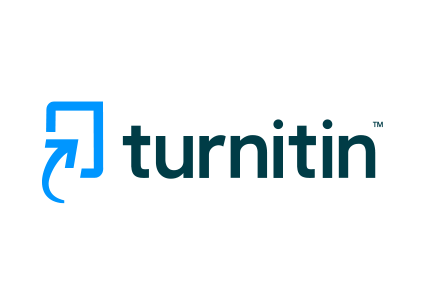Revealing Human and Machine Translation Differences Through Annotation
Riris Ispas Riandini(1*), Evert Haryanto Hilman(2)
(1) Universitas Nasional
(2) Universitas Nasional
(*) Corresponding Author
Abstract
Keywords
Full Text:
PDFReferences
Baker, M. (2011). In other words: A coursebook on translation (2nd ed.). Routledge.
Chesterman, A. (2016). Memes of translation: The spread of ideas in translation theory (Revised). John Benjamins Publishing Company.
Clark, C. L. (2020, January). You Perfect, Broken Thing. Uncanny Magazine Issue Thirty-Two. https://www.uncannymagazine.com/article/you-perfect-broken-thing/
Echols, J. M., & Shadily, H. (2006). Kamus Bahasa Indonesia (28th ed.). PT Gramedia Pustaka Utama.
Eisnitz, G. A. (1997). Slaughterhouse: The shocking story of greed, neglect, and inhumane treatment inside the U.S. meat industry. Prometheus Books.
Foley, M., & Hall, D. (2003). Longman Advanced Learners’ Grammar. Pearson Education Limited.
Fowler, H. W., & Fowler, F. G. (1919). The concise Oxford dictionary of current English (1st ed.). Clarendon Press.
Halliday, M. A. K., & Hasan, R. (1976). Cohesion in English (1st ed.). Longman.
Haseeb, M., Sajid, M. A., & Abbasi, W. S. (2025). Machine translation vs. human translation: A comparative study of translation quality. Social Science Review Archives, 3(1), 885–894. https://doi.org/https://doi.org/10.70670/sra.v3i1.375
Jabbar, A. A., & Hilman, E. H. (2024). Evaluating the quality of translations produced by machines as opposed to human. PROJECT (Professional Journal of English Education), 7(3), 603–616. https://doi.org/https://doi.org/10.22460/project.v7i3
Larson, M. L. (1984). Meaning-based translation: A guide to cross-language equivalence. University Press of America.
Li, H., Graesser, A. C., & Cai, Z. (2014). Comparison of Google translation with human translation. Twenty-Seventh International Florida Artificial Intelligence Research Society Conference, 190–195. https://cdn.aaai.org/ocs/7864/7864-36722-1-PB.pdf
Longman. (2003). Longman Dictionary of Contemporary English (4th ed.). Foreign Language Teaching and Research Press.
Machmud, F. N., & Hilman, E. H. (2022). Annotated Translation of Seven Artist’ Song Lyrics. IdeBahasa, 4(2), 125–134. https://doi.org/https://doi.org/10.37296/idebahasa.v4i2
Mahardika, H. M. (2025). Annotated translation of Hasting and Meyer’s No Rules Rules: Netflix and culture of reinvention from English into Indonesian. JLT (Jurnal Linguistik Terapan), 5(1), 10–18.
Molina, L., & Hurtado Albir, A. (2002). Translation techniques revisited: A Dynamic and Functionalist Approach. Meta: Journal Des Traducteurs, 47(4), 498–512. https://doi.org/https://doi.org/10.7202/008033ar
Newmark, Peter. (1988). A textbook of translation. Prentice-Hall International.
Norrick, N. R. (1989). How paradox means. Poetics Today, 10(3), 551–562. https://doi.org/https://doi.org/10.2307/1772904
Nunan, D. (1992). Research methods in language learning. Cambridge University Press.
Okpor, M. D. (2014). Machine Translation Approaches: Issues and Challenges. IJCSI International Journal of Computer Science Issues, 11(5), 159–165. www.IJCSI.org
Pocket Oxford English Dictionary (10th ed.). (2005). Oxford University Press.
Tata Bahasa Baku Bahasa Indonesia (4th ed.). (2017). Kementerian Pendidikan dan Kebudayaan.
The Cambridge thesaurus of American English. (1993). Grandreams Limited.
Tim Penyusun. (2008). Kamus Bahasa Indonesia. Pusat Bahasa Departemen Pendidikan Nasional.
Tim Redaksi Tesaurus Bahasa Indonesia. (2008). Tesaurus Bahasa Indonesia. Pusat Bahasa Departemen Pendidikan Nasional.
Urban Dictionary. (n.d.). Goddamn. In Urban Dictionary. Retrieved July 3, 2025, from https://www.urbandictionary.com/define.php?term=goddamn&page=2
Urban Dictionary. (n.d.). Not my circus, not my monkeys. In Urban Dictionary. Retrieved June 27, 2025, from https://www.urbandictionary.com/define.php?term=not%20my%20circus%20not%20my%20monkeys
Williams, J. , & C. A. (2002). The map: A beginner’s guide to doing research in translation studies. St. Jerome Publishing.
Article Metrics
Refbacks
- There are currently no refbacks.
Copyright (c) 2025 Riris Ispas Riandini, Evert Haryanto Hilman

This work is licensed under a Creative Commons Attribution-ShareAlike 4.0 International License.










